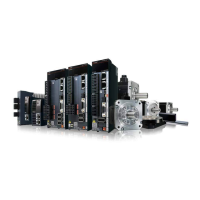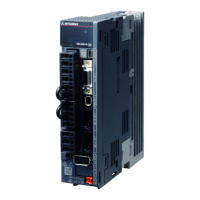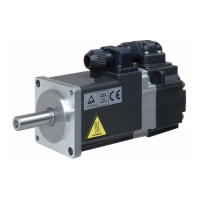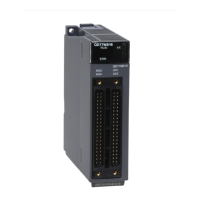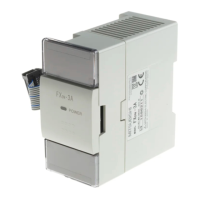3 - 35
3. SIGNALS AND WIRING
3.8 Interfaces
3.8.1 Internal connection diagram
T
SON SON SON
CN1
4
RES RES RES 3
EM1 EM1 EM1 8
LSP ST1 6
LSN ST2 7
CR 5
OPC 2
1
13
PP 23
PG 22
NP 25
NG 24
SP1
DICOM
DOCOM
SP1
RS2
RS1
PST
CN1
9
10
11
12
ALM ALM
INP
RD
MBR
SA
MBR MBR
RD
PS
CN1 P S T
15
16
17
18
19
20
21
14
LA
LAR
LB
LBR
LZ
LZR
OP
LG
3
CN2 P S T
2
4
7
8
MR
MRR
MD
MDR
LG
USB
E
M
PST
GND
VBUS 1
2
3
5
CN3
CNP1
RA
RA
ALM
RD
CP/CL
SON
MD0
EM1
ST1
ST2
DI0
OPC
DI1
DOG
CP/CL
CP/CL
ALM
INP
RD
MBR
CP/CL
CP/CL
24VDC
(Note
2, 4)
Servo amplifier
(Note 1)
Approx. 1.2k
Approx. 100 Approx. 1.2k
Approx. 100
Approx. 5.6k
Approx. 5.6k
D-
D+
(Note 1)
(Note 1)
<Isolated>
(Note
3)
Differential line
driver output
(35mA or less)
Open collector
output
Encoder
Servo motor
(Note 1)
(Note 1)
(Note
3)
Note 1. P: Position control mode, S: Internal speed control mode, T: Internal torque control mode
CP: Positioning mode (Point table method) CL: Positioning mode (Program method)
2. This diagram is for the open collector pulse train input. When inputting the differential line driver pulse train in the position
control mode, make the following connection.
DOC 46
OPC 2
1
13
PP 23
PG 22
NP 25
NG 24
DICOM
DOCOM
24VDC
3. For sink I/O interface. For source I/O interface, refer to section 3.8.3.
4. When assigning the input device to the CN1-23 pin or CN1-25 pin in the internal speed control mode, internal torque control
mode, or positioning mode, use it at sink input interface. It cannot be used at source input interface. For the positioning mode,
the input devices (DI1, DOG) are assigned to the initial values.

